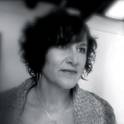From 1927 on, a statue of a robust indigenous woman greeted visitors at the entrance of the new Parque México in Mexico City. Shaded by high trees, the woman—pouring water from two large urns into a small pool of blue waters—beckoned passersby away from the hustle and bustle of the large new Insurgentes thoroughfare to a place where life was tranquil, easy, and uncorrupted by the toils of modernity. With her braids, her strong indigenous physique, and the blue waters and greenery around her, the statue represented an idyllic, pastoral landscape that weary city dwellers had come to associate with authentic Mexico—a utopian place where beauty and health went hand in hand. What residents of the surrounding Colonia Condesa encountered upon entering the park, however, was not merely a shady respite of trails, ponds, and fountains. Directly beyond the fountain, on the grounds that had once housed an upscale horse-racing track (the Hipódromo), a visitor would find a large open-air theater. Bathed in Art Deco, the theater’s stage was graced by two slender columns bearing two women significantly distinct from the indígena: they were tall, angular, and white. Named after the man who had first accomplished transcontinental flight, the Teatro al Aire Libre Lindbergh inspired onlookers to reach for the skies.
Available at: http://works.bepress.com/ageeth_sluis/31/
